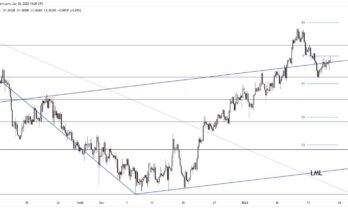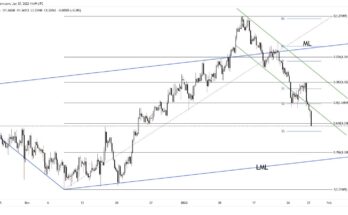Oscar Wilde once described second marriages as “the triumph of hope over experienceâ€. Something similar might be said about loonie optimism over the past month. Although Canadian exports have a very long history of responding very slowly to US economic rebounds, market participants bid the currency upward in the hope that this time would be different, driving the loonie to a four hundred and fifty basis point gain since the middle of March.
This uptrend stopped dead on Friday morning, when the national statistics agency reported that 28,900 Canadian jobs had been destroyed in April, meaning that the number of people working has risen less than 0.8% since the middle of last year. With export industries failing to take the baton from sectors driven by domestic spending, employment growth has stagnated. Against this backdrop, the Bank of Canada is unlikely to go on the interest rate warpath, meaning that the currency’s gains are now facing headwinds. The loonie is sharply lower to begin the week, but remains near the top of the trading range – possibly giving importers a brief opportunity to lock in gains at optimal levels.
In contrast, global markets are in a cautiously optimistic mood, with many bourses marching higher ahead of the open. With central banks remaining dovish, growth accelerating, and turmoil in the Ukraine approaching a possible end game, investors are sending equity indexes higher, while currency volatility continues to flatline.
In a statement on the weekend, Chinese President Xi Jinping said that observers should remain “cool-minded†as the economy decelerates, suggesting that reforms are necessary to put the country on the path toward long-term sustainability. With fundamental demand stabilizing, commodity prices rose – particularly copper, which unwound recent losses to rise almost 7%.
Week Ahead
There are relatively few data points in the docket for the week ahead, but several are likely to trigger volatility.
On Tuesday, China will release industrial production and retail sales, potentially impacting commodity-linked and Southeast Asian currencies. The United States will then drop advance retail sales, providing observers on both sides of the border with crucial insight into whether consumers will continue to drive demand higher into the summer months.
Thursday will be a big day in the euro area, when first quarter growth numbers and April inflation data are due for release. Both of these are expected to set the stage for the European Central Bank’s decision in June, and could very well provide the impetus for a break out of the trading range that has remained in place since the beginning of the year.
We would suggest however, that those with great stimulus expectations may be disappointed.
While the euro area’s current flirtation with deflation is causing alarm in many circles, the reality is that prices across much of the periphery had risen far too high ahead of the crisis. That they are now correcting downward is only natural – and might actually be considered a positive phenomena as these economies recover.
It’s also difficult to argue that the currency bloc is starving for liquidity, when government debt yields are trading at astonishingly low levels. Spain is borrowing more cheaply than the United States, while Ireland is paying less than Great Britain.
While Mr. Draghi is virtually certain to launch some form of stimulus, it won’t approach the breadth and scale of the Japanese or American quantitative easing programmes. Something smaller, more precise, and less impactful is more likely.
Bottom line? As Mark Twain put it, “It ain’t what you don’t know that gets you into trouble. It’s what you know for sure that just ain’t so†– as is so often the case, markets may be setting themselves up for a fall. The euro won’t remain boring for long..
Further reading:Â Could EURUSD Be The Trade Of The Year?



